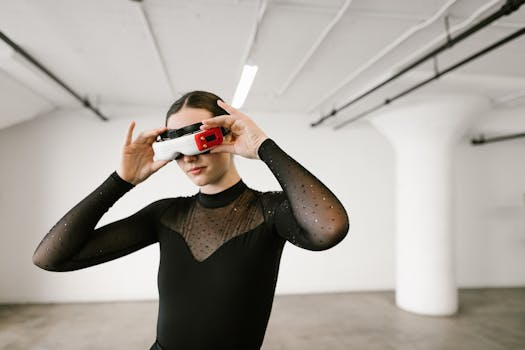Digital Fitting Rooms and the Future of Fashion
As technology continues to advance, it’s no surprise that the fashion industry is jumping on board to capitalize on the latest innovations. One area that has seen a significant transformation is the traditional fitting room experience. In the past, the fitting room was simply a space to try on clothes and assess their fit. However, with the introduction of digital fitting rooms, the future of fashion is set to be revolutionized. With virtual try-ons, personalized recommendations, and the ability to skip long lines, digital fitting rooms are changing the way we shop for clothes. Let’s explore the world of digital fitting rooms and the potential they hold for the future of fashion.
Revolutionizing the Fitting Room Experience
The concept of digital fitting rooms has been around for a few years now, but it’s only in recent years that it has gained mainstream adoption. Brands like Ralph Lauren, H&M, and even luxury fashion houses like Tommy Hilfiger and Burberry have all experimented with digital fitting rooms in their stores. So, what exactly are digital fitting rooms, and how do they work?
The Basics of Digital Fitting Rooms
In essence, digital fitting rooms are a combination of cutting-edge technology and traditional fitting room experience. They typically consist of a room equipped with a large touchscreen display, a camera, and a barcode scanner. Shoppers can enter the room with their desired items and start scanning their chosen items to bring up product information, recommended outfits, and different color options.
One of the most significant features of digital fitting rooms is the virtual try-on option. By using augmented reality (AR) technology, customers can see themselves wearing the clothes they’ve selected on the screen. This eliminates the need to physically try on each piece of clothing, saving time and effort for shoppers.
Personalized Recommendations
One of the biggest advantages of digital fitting rooms is their ability to provide personalized recommendations. By scanning the items that the customer brings into the fitting room, the digital display can suggest other items that may complement their chosen items. This not only makes the shopping experience more convenient but also encourages customers to try out new styles and potentially purchase more items.
The Future of Personalization in Fashion
As digital fitting rooms continue to evolve, we can expect to see more advanced personalized recommendations. With the help of artificial intelligence (AI), fitting rooms will be able to analyze a customer’s body shape, style preferences, and previous purchases to suggest items that are perfectly tailored to their individual needs. This level of personalization has the potential to provide a seamless and highly enjoyable shopping experience for customers.
Saving Time and Effort
One of the most significant pain points of the traditional fitting room experience is the long lines. With only a limited number of fitting rooms available, customers often have to wait in long lines to try on clothes. Digital fitting rooms have the potential to eliminate this inconvenience by allowing customers to try on clothes virtually. This not only saves time but also reduces the frustration of waiting in line.
Say Goodbye to the Hassle of Returns
Another common problem with traditional fitting rooms is when customers purchase clothes and then realize they don’t fit well when they try them on at home. This often leads to returns, which can be a hassle for both customers and retailers. With the use of virtual try-ons in digital fitting rooms, customers can be confident that the clothes they purchase will fit well, minimizing the need for returns and exchanges.
The Future of Fashion
In the near future, we can expect to see more fashion retailers adopting digital fitting rooms as part of their store experience. These fitting rooms have the potential to not only enhance the shopping experience for customers but also provide valuable data for retailers. With the use of data analytics, retailers can gain insights into customer preferences, shopping behaviors, and trends, helping them make more informed decisions in the future.
A Holistic Shopping Experience
In conclusion, digital fitting rooms are more than just a gimmick. They have the potential to revolutionize the fashion industry and provide a more holistic shopping experience for customers. With personalized recommendations, virtual try-ons, and the ability to save time and effort, digital fitting rooms are shaping the future of fashion. As technology continues to advance, it’s exciting to think about the possibilities that digital fitting rooms hold for the fashion industry.










